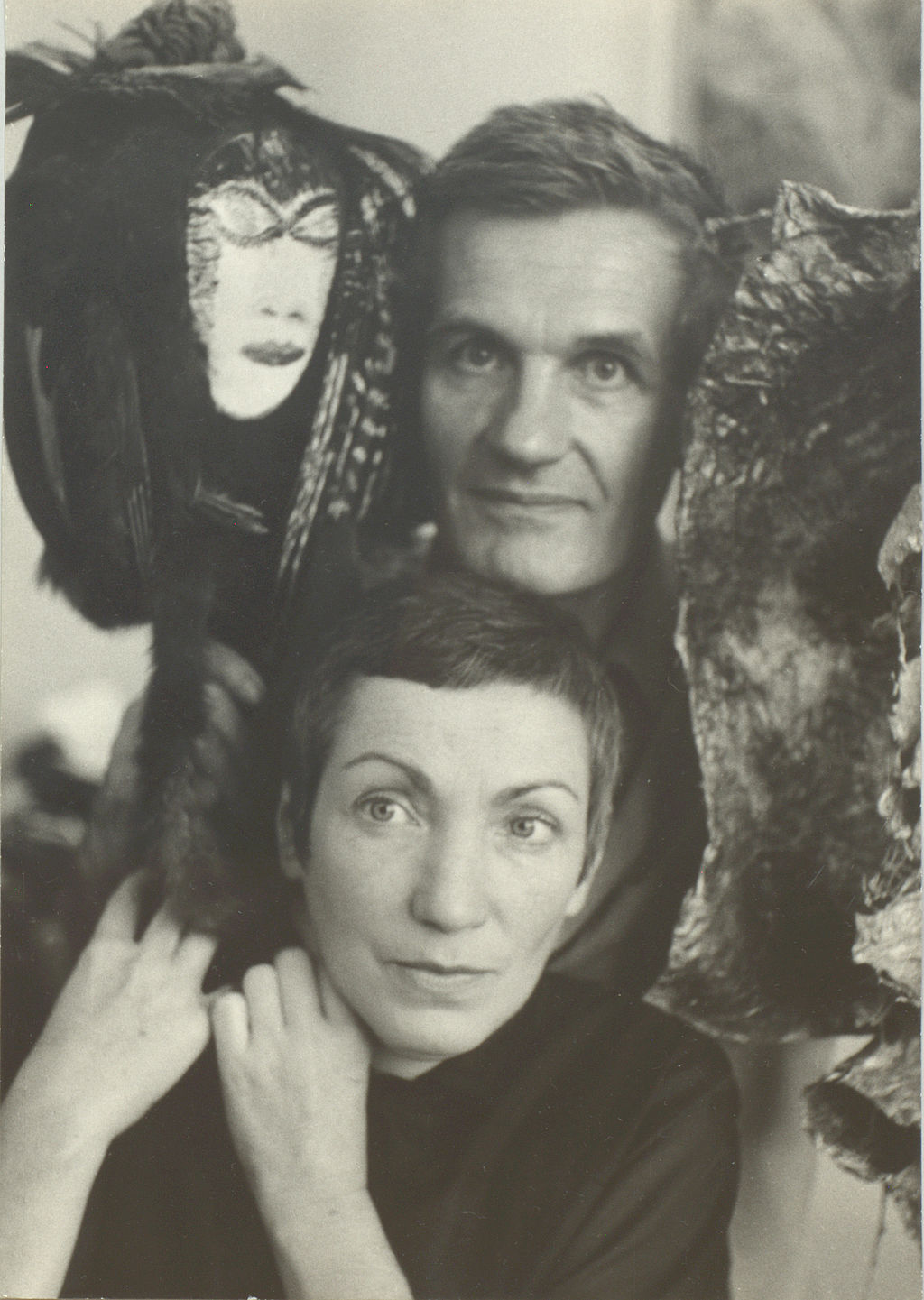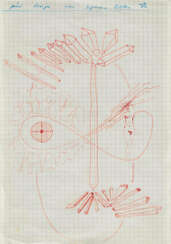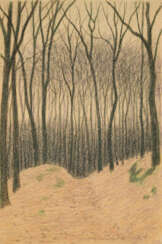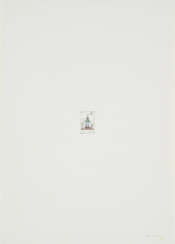цветной карандаш





Bernard Schultze was a German painter who co-founded the Quadriga group of artists along with Karl Otto Götz and two other artists.


Erich Heckel was a German painter and printmaker, and a founding member of the group Die Brücke ("The Bridge") which existed 1905–1913. His work was part of the art competitions at the 1928 Summer Olympics and the 1932 Summer Olympics.


Sigmar Polke was a German painter and photographer.
Polke experimented with a wide range of styles, subject matters and materials. In the 1970s, he concentrated on photography, returning to paint in the 1980s, when he produced abstract works created by chance through chemical reactions between paint and other products. In the last 20 years of his life, he produced paintings focused on historical events and perceptions of them.


Ursula Schultze-Bluhm was a German painter.


Bernard Schultze was a German painter who co-founded the Quadriga group of artists along with Karl Otto Götz and two other artists.


Lyonel Charles Adrian Feininger was an American-German artist renowned for his unique integration of Expressionism, Cubism, and Bauhaus principles. His body of work, which spans several critical decades in modernism's development, is celebrated for its distinctive blend of architectural and nautical motifs, articulated through planar shifts and jagged lines of Cubism, with a vibrant Orphist color palette.
Lyonel Feininger's journey as an artist began in earnest when he was 36, becoming a pivotal figure in various German expressionist groups and a founding member of the Bauhaus, where he led the printmaking workshop. His art, which also includes significant contributions to caricature and photography, explores the intricate relationship between humanity and industrialization, evident in his depictions of architectural and mechanized forms.
His work was subject to Nazi criticism, being labeled as "degenerate," which led to his return to the United States, where he continued to evolve his artistic style. Posthumously, Lyonel Feininger's art has been the focus of several retrospectives, and his pieces, like "Jesuits III," continue to fetch high figures at auctions, underscoring his lasting impact on the art world.
Notably, Lyonel Feininger's "Cathedral" woodcut, representing the Bauhaus's utopian vision, remains one of his most iconic works, symbolizing the integration of art and craftsmanship with its avant-garde yet traditional approach. His legacy is further carried by his sons, Andreas and T. Lux Feininger, who also made their marks in the arts.
For collectors and art and antiques experts, Feininger's work represents a fascinating intersection of various art movements and a testament to the enduring nature of expressive and innovative artistry. To stay updated on new product sales and auction events related to Lyonel Feininger, consider signing up for updates, ensuring you're informed about the latest opportunities to engage with his enduring legacy.


James Lee Byars was an American conceptual artist and performance artist specializing in installations and sculptures, as well as a self-considered mystic. He was best known for his use of personal esoteric motifs, and his creative persona that has been described as "half dandified trickster and half minimalist seer".
Byars' notable performance works include The Death of James Lee Byars and The Perfect Smile, and in terms of multiple sculptures, the many letters he wrote that were composed as decorated sculptures.


Erich Heckel was a German painter and printmaker, and a founding member of the group Die Brücke ("The Bridge") which existed 1905–1913. His work was part of the art competitions at the 1928 Summer Olympics and the 1932 Summer Olympics.


Erich Heckel was a German painter and printmaker, and a founding member of the group Die Brücke ("The Bridge") which existed 1905–1913. His work was part of the art competitions at the 1928 Summer Olympics and the 1932 Summer Olympics.













![[Экз. из биб-к С.Я. Эфрона и Н.О. Лосского]. Федоров, Н.Ф. Философия общего дела: Статьи, мысли, письма / [Соч.] Николая Федоровича Федорова, изд. под. ред. В.А. Кожевникова и Н.П. Петерсона; биогр. очерк сост. А. Остромировым. — Изд. 2-е.](/assets/image/picture_1919728/b46d9/kqbdmy7zrnkhovrarxmw2jnbagvaiwnttmyhkggnquee71wbkten0npfuitod81640796680jpg__fix_374_244.jpeg)
![[Экз. из биб-к С.Я. Эфрона и Н.О. Лосского]. Федоров, Н.Ф. Философия общего дела: Статьи, мысли, письма / [Соч.] Николая Федоровича Федорова, изд. под. ред. В.А. Кожевникова и Н.П. Петерсона; биогр. очерк сост. А. Остромировым. — Изд. 2-е.](https://veryimportantlot.com/assets/image/picture_1919728/b46d9/kqbdmy7zrnkhovrarxmw2jnbagvaiwnttmyhkggnquee71wbkten0npfuitod81640796680jpg__fix_374_244.jpeg)





![[Экз. генерала А.П. Богаевского]. Костомаров, Н.И. Малороссийский гетман Зиновий-Богдан Хмельницкий / Н.И. Костомаров.](/assets/image/picture_4604255/cfd4f/g3mz85aunis1joh0y31ywu2zrafnvwm1tvathdgvfitfxrldutjgl4mn7opky1745695220jpg__fix_374_244.jpeg)
![[Экз. генерала А.П. Богаевского]. Костомаров, Н.И. Малороссийский гетман Зиновий-Богдан Хмельницкий / Н.И. Костомаров.](https://veryimportantlot.com/assets/image/picture_4604255/cfd4f/g3mz85aunis1joh0y31ywu2zrafnvwm1tvathdgvfitfxrldutjgl4mn7opky1745695220jpg__fix_374_244.jpeg)

![[Экз. генерала А.П. Богаевского]. Костомаров, Н.И. Герои смутного времени / Н.И. Костомаров.](/assets/image/picture_4644457/792b2/h7axwrcd4kuvi56bxwi0hxagjyhrrrlphdn1b0ngsqr5fttcpvyqvx2mxkjb0lj1746115061jpg__fix_374_244.jpeg)
![[Экз. генерала А.П. Богаевского]. Костомаров, Н.И. Герои смутного времени / Н.И. Костомаров.](https://veryimportantlot.com/assets/image/picture_4644457/792b2/h7axwrcd4kuvi56bxwi0hxagjyhrrrlphdn1b0ngsqr5fttcpvyqvx2mxkjb0lj1746115061jpg__fix_374_244.jpeg)




































